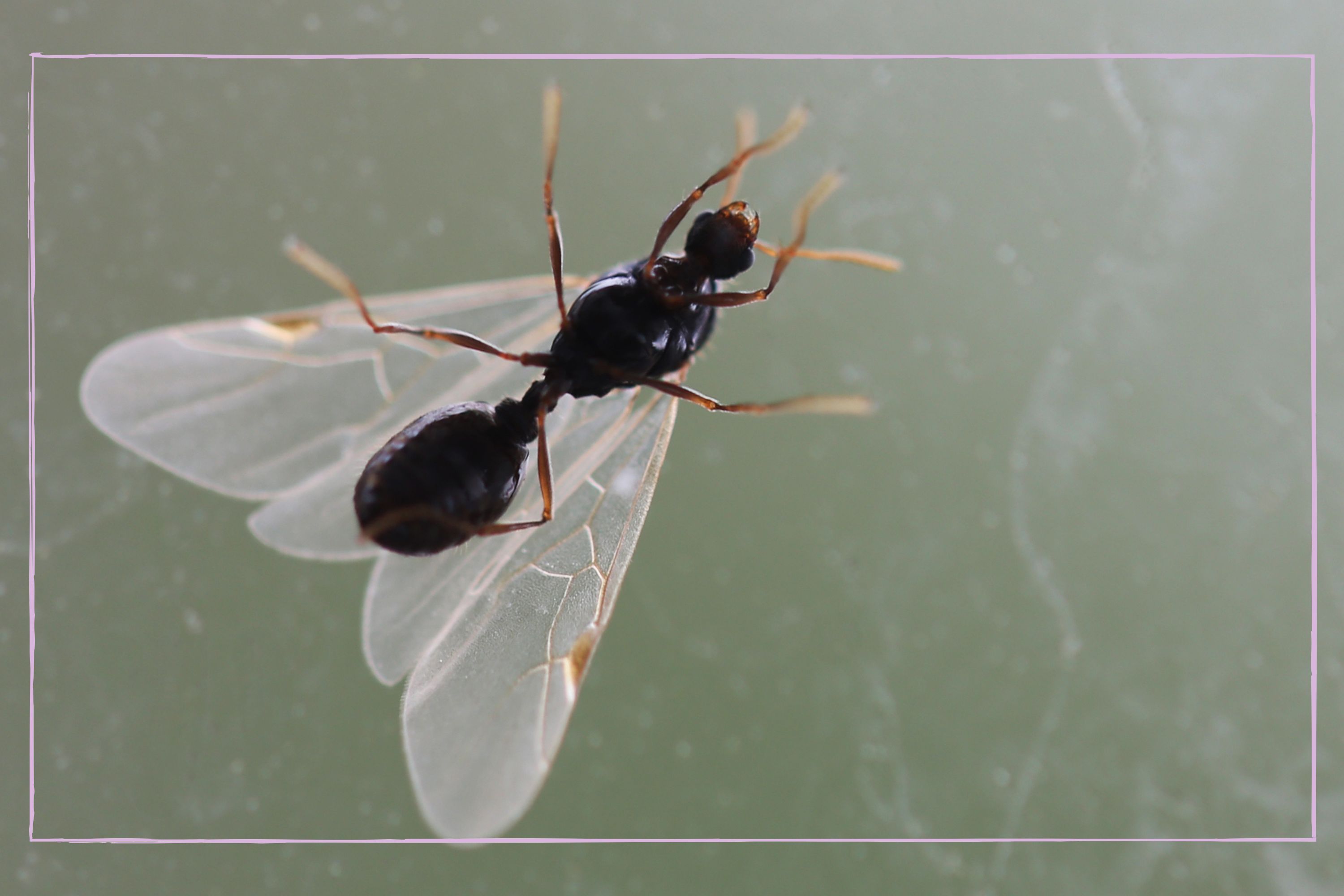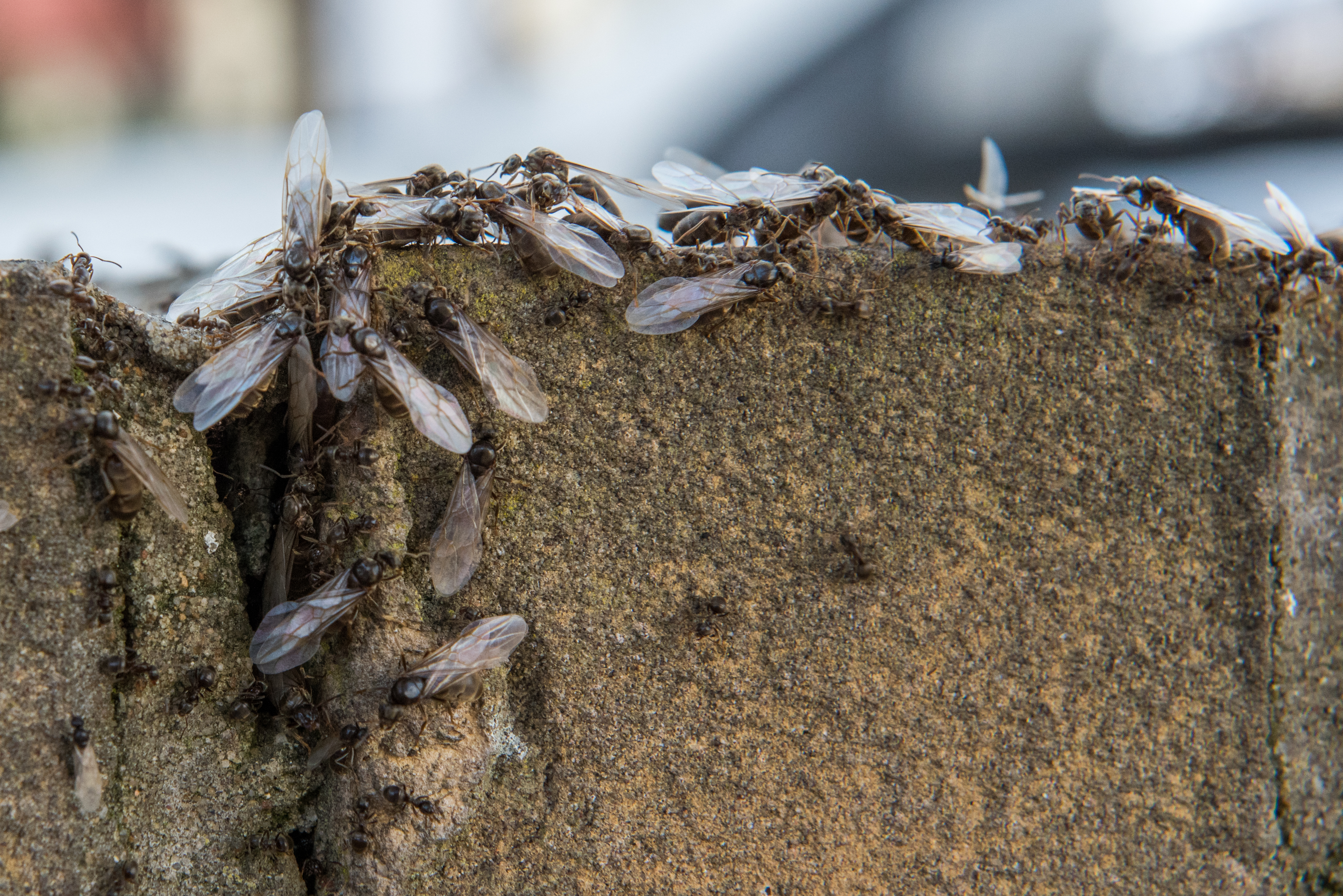When is Flying Ant Day in 2023 and why are there so many flying ants?
Flying ants suddenly appear all over the UK around the same time every year. But where have they come from and how can you get rid of them?


Flying ants always seem to appear on the same day in the UK - a phenomenon known as Flying Ant Day.
It's that time of year again where flying ants are causing disruption in our homes and gardens, leaving most people wondering where they've come from, how they can get rid of ants and, if they're unlucky enough, how to treat the insect's bite.
Though the actual date changes each year, the sudden appearance of the critters usually occurs in July, at the start of summer. Here's everything you need to know about why there are so many flying ants and how you can get rid of them.
When is Flying Ant Day in 2023?
Flying ant day usually arrives in mid-July, and according to Pest UK comes after a spell of hot and humid weather. This means that if conditions are similar across a large area then the flying ants may appear on the same day.
This year, experts have suggested that Flying Ant Day could last for several weeks, after a particularly wet March and a record-breakingly hot June in the UK. Paul Blackhurst, technical academy head at Rentokil Pest Control, told the Mirror: "Following a wet start to the spring this year, followed by the very warm weather we’ve been experiencing, the conditions are ripe for bumper swarms. Humidity plays a crucial role in the lifecycle of ants, particularly during the nuptial flight, keeping their wings and bodies moist as they mate on the wing."
Is everyone else experiencing flying ant hatching day, or is it just here? pic.twitter.com/RCwoc8uJaaJuly 18, 2023
IT'S FLYING ANT DAY!!! 🐜 pic.twitter.com/GpFtw0vMNmJuly 18, 2023
The Natural History Museum adds that flying ants tend to appear earlier in urban areas, because temperatures are usually higher. They say that this can often be unfortunate for tennis players at Wimbledon, explaining "There are years when flying ants plague players during their matches, causing so much disruption it makes the news."
However, The Society of Biology found in a study that the idea of a single Flying Ant Day is actually a misconception. Instead, flying ants appear over a 'season', though there are peaks in their appearances.
Parenting advice, hot topics, best buys and family finance tips delivered straight to your inbox.
Why are there so many flying ants?
In the summertime, ants sprout wings and seek out other colonies to mate with (known as their 'nuptial flight'), which is why we see so many flying ants around this time of year.
The large number of ants appearing in a short space of time increases the chance of a queen encountering a male from another nest, therefore increasing chances of reproduction. There are so many at this time of year that the Met Office has been known to pick them up on its satellites.
Simon Partridge, a Met Office forecaster, told the BBC: "Every year around this time we do pick them up on the rain radar. At the moment it's harder to tell because we've got so many showers and the ants look like showers.
"It's generally the southern parts of the UK where we tend to notice it most. When we do get the rain, they don't fly as much."
What causes flying ants?
Ant swarms are usually triggered by hot and humid weather, which is when the queen ants and males tend to leave the nest. This is because an ant colony can only expand so much, so at some point a new queen begins a colony on her own.
The Society of Biology says that nuptial flight is an important part of the reproduction process for ant species, because it's when the virgin queens mate with males and start a new colony.
Once the queens have mated she loses her wings, which is why you will sometimes see large ants walking around on their own. These are new queens looking for somewhere to set up their nest. Once underground, she will lay her eggs and rest until the eggs hatch and the cycle begins again.
Where do flying ants come from?
Flying ants emerge from their nests for their nuptial flight. Most ants that we see the rest of the year don't have wings, but the queens and males do, and prior to swarming they all live in a colony in the nest.
Their nests have a single queen, which can be up to 15mm long, and typically around 5,000 workers (although there can be as many as 15,000). Workers are the wingless ants we see most of the year-round, whose job is to collect food.
While the male ants usually die within a few days of mating, worker ants are all female and they typically live for a month. However, the queen ant can live for more than 10 years and will spend most of her life in the nest.
How long do flying ants last?
Flying ants usually emerge over several weeks. Although it's referred to as a day, it takes much longer for all the ants to sprout wings and emerge, and for the mating ritual to be completed.
Do flying ants bite?
Flying ants can bite, although it's highly unlikely that they will do so because they are so focused on mating.
The NHS website says "Ant bites and stings are generally harmless, although you'll probably feel a nip and a pale pink mark may develop on your skin." They add that the best ways to avoid being bitten are to wear insect repellent, keep food and drink covered and avoid disturbing nests.
Although flying ants are harmless to humans, they do have a strange effect on seagulls. Dr Rebecca Nesbit of the Society of Biology told The Telegraph that the ants contain formic acid, which can cause gulls to appear “drunk” and lose their inhibitions after eating them. Seagulls have been known to fly into buildings and moving cars after eating the ants.

What kills flying ants? How to get rid of them
You can get rid of flying ants with washing up liquid, insecticides or boiling water. However, left alone, flying ants will go away after a couple of weeks.
While the insects do have their benefits - their tunnelling improves soil quality, the swarming provides food for birds, and they are also important for the survival of butterflies - their presence can sometimes be unbearable.
In addition, flying ants have been known to infest homes, and if this is the case you will want to get rid of them. A good method to try is to mix washing up liquid with water in a spray bottle and spray the mixture on the ants while they're in the air. The washing up liquid will stick to the ants' bodies and dehydrate them.
The most effective way to treat an invasion in the home is to use insecticidal powder around the wall and door frames or, if you have an ant hill in your garden, pouring boiling water on it should do the trick.
The best way to avoid flying ants in your home is to prevent them getting inside at all, which you can do by sealing any cracks or entry points, regularly cleaning floors and countertops and making sure not to leave food out.

Ellie is GoodtoKnow’s Family News Editor and covers all the latest trends in the parenting world - from relationship advice and baby names to wellbeing and self-care ideas for busy mums. Ellie is also an NCTJ-qualified journalist and has a distinction in MA Magazine Journalism from Nottingham Trent University and a first-class degree in Journalism from Cardiff University. Previously, Ellie has worked with BBC Good Food, The Big Issue, and the Nottingham Post, as well as freelancing as an arts and entertainment writer alongside her studies. When she’s not got her nose in a book, you’ll probably find Ellie jogging around her local park, indulging in an insta-worthy restaurant, or watching Netflix’s newest true crime documentary.